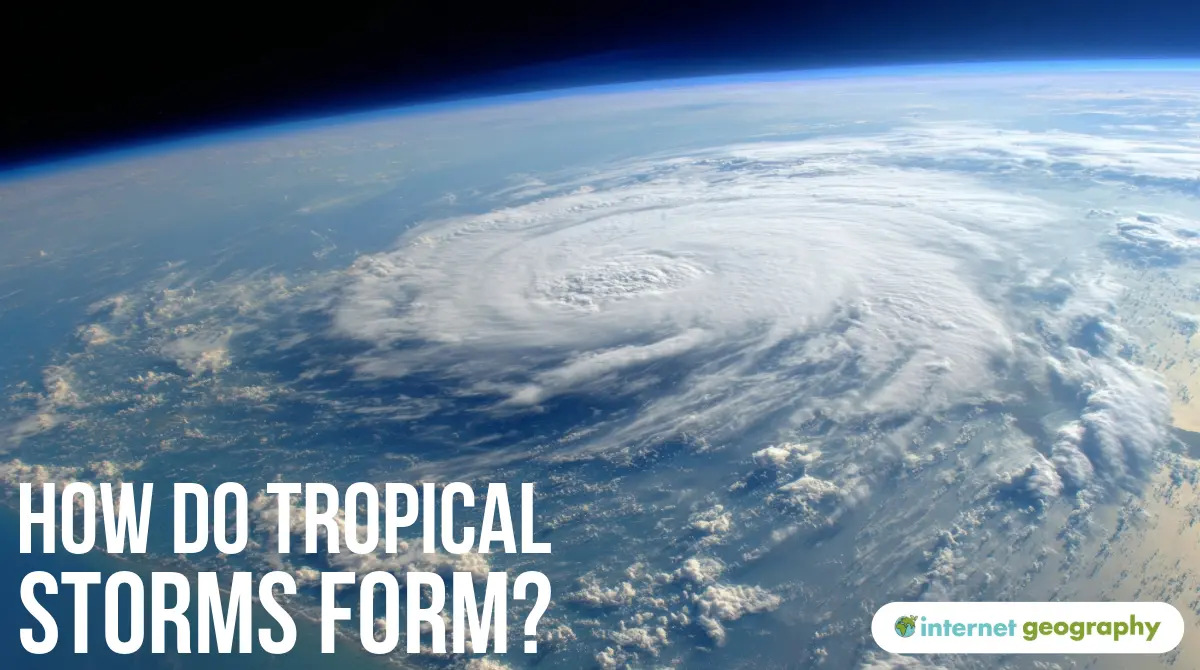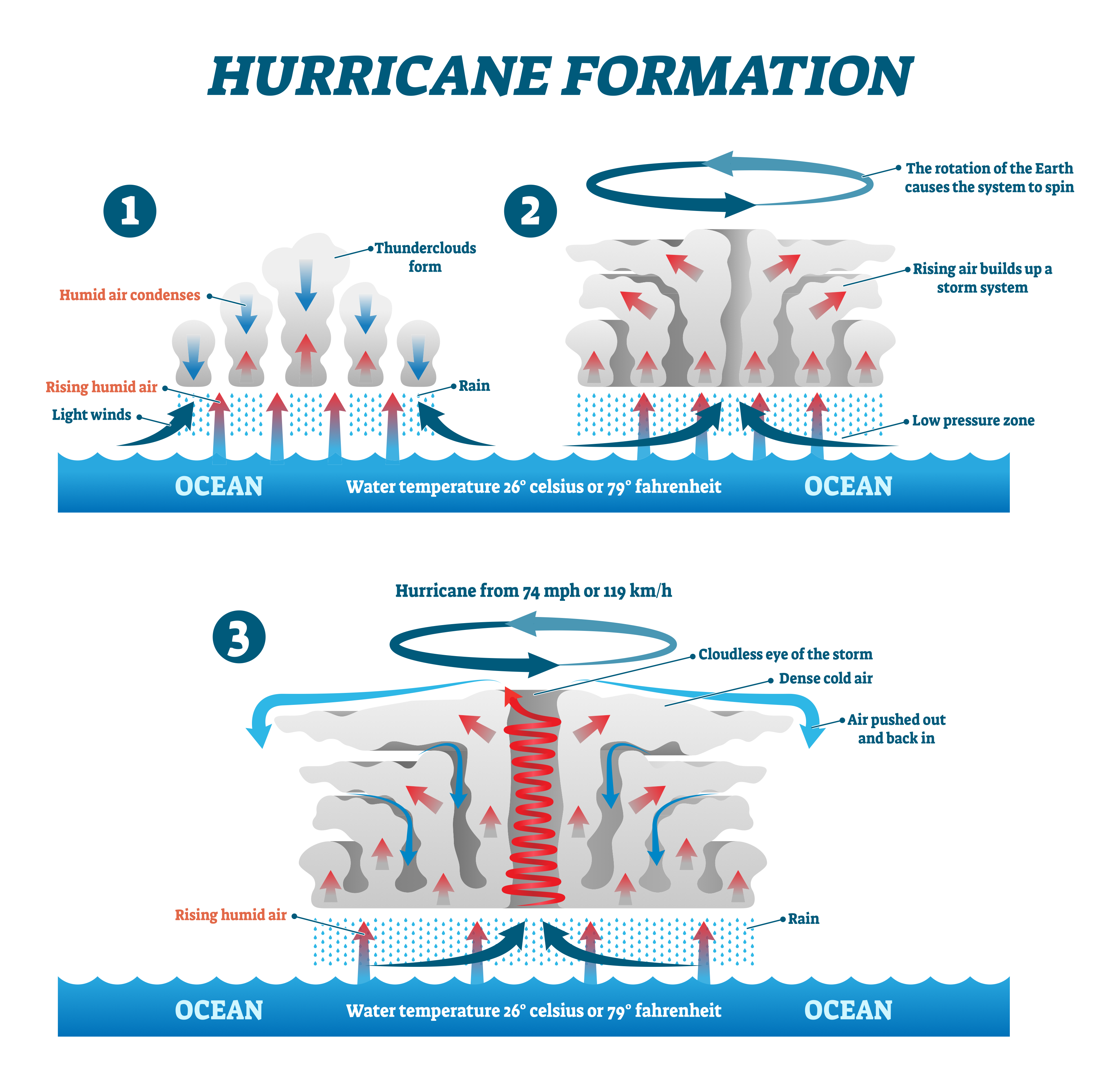The Formation of a Tropical Storm
- Tropical Storms start between 5º and 30º north and south of the equator, where surface sea temperatures reach at least 26.5ºC, which is about the temperature of a heated swimming pool. This is why we don’t get tropical storms in the UK.
- Air is heated above the surface of these warm tropical oceans. The warm air rises rapidly under low-pressure conditions.
- The rising air draws up more air and large volumes of moisture from the ocean, causing strong winds.
- The Coriolis effect (spinning movement of the Earth) causes the air to spin upwards around a calm central eye of the storm.
- As the air rises, it cools and condenses to form large, towering cumulonimbus clouds, which generate torrential rainfall. Heat is given off when the air cools and powers the tropical storm.
- Cool air sinks into the eye. Therefore, there is no cloud, so it is drier, clearer and much calmer.
- The tropical storm travels across the ocean with the prevailing wind.
- When a tropical storm meets land, it is no longer fueled by the moisture and heat from the ocean, so it loses power and weakens.
The diagram below summarises the formation of a tropical storm.


